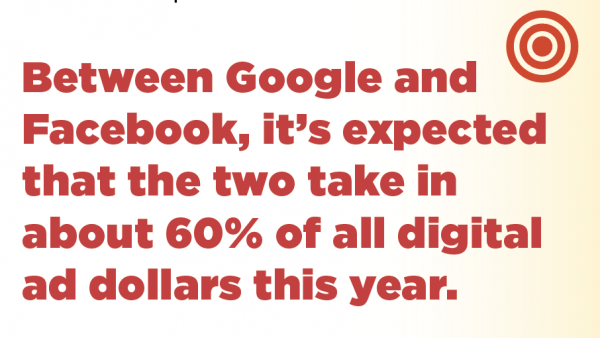Which is better: broader reach or narrow?
Narrow targeting is very important for direct response advertisers, small businesses trying to appeal to local customers, and for advertisers trying to get users to download a game app. But for many larger advertisers, narrow targeting can be counterproductive.
The more we search for attribution to ROI on our digital advertising, the more likely we are to narrow our audience to only people that are actively looking for our specific products or services. Makes logical sense, right?
Maybe not. While the tools at our disposal to hyper target are getting better and better, are we missing a big opportunity for future sales by targeting too narrowly? Maybe so. And because it costs more per person reached when we use narrow targeting, are we making the most of our money?
Take Facebook advertising for example. The ability to hyper target is amazing, but some case studies show that companies can receive a bigger sales increase if they reach a more significant portion of
a platform’s overall audience.

For instance, two years ago Procter & Gamble (P&G) tried narrowly targeting ads for its Febreze
air freshener at pet owners and households with large families. Seemed logical, but the brand found that sales stagnated during the effort. However, results rose when the campaign on Facebook and elsewhere was expanded to include anyone over 18.
We’ve also seen this pattern with some of our clients. There are times when buying very targeted, smaller audiences results in higher CPMs (cost per thousand impressions), but not much else. And these higher CPMs rank poorly in Media Mix Modeling—a method marketers use to attribute sales or other outcomes to different media investments.
That’s why P&G, the world’s biggest marketer, changed the way it buys advertising on Facebook. It is cutting its spend on highly targeted ads and is increasing spend on ads that address much larger swaths of the potential audiences for its brands. For P&G that also means increasing their TV spending.
Shifting to broader reach is worth considering for many brands that drive purchase in-store, or sell services across a wide spectrum.

For B2B and direct-response ads selling products, online measurement is typically clearer from impression to purchase, and more specific targeting, even though it is more expensive, generally makes sense. But even then, careful consideration is advised.
Last year, Gartner developed a B2B model around buyer readiness.Based on this model, even if you have a very well-defined target segment, you will likely have buyers in all these states of readiness. So if your advertising investments are targeted at only shoppers or buyers, you are missing an opportunity to move prospects along the sales cycle, and they may be harder to capture later. Whoever moves these prospects forward in readiness has a big say in their thinking. So dig into your target market. Determine where they are on the readiness spectrum. And then develop your marketing and sales strategy to address the segments with the most opportunity for you now and in the future.



